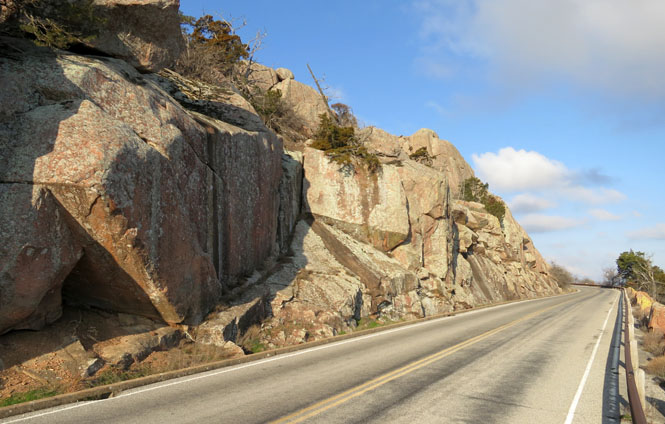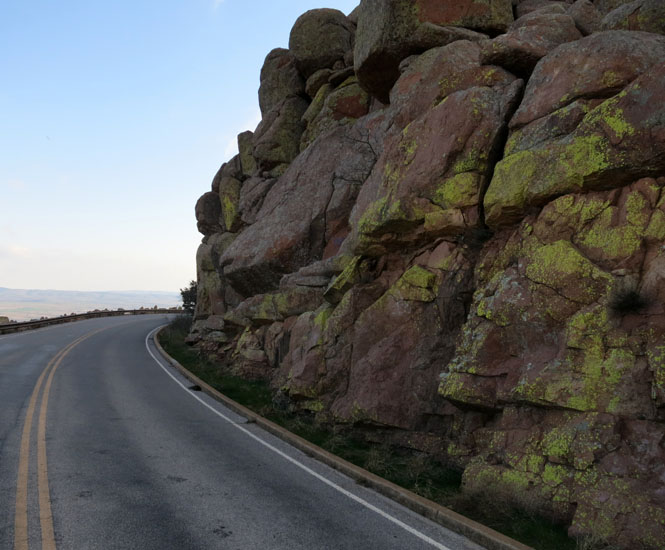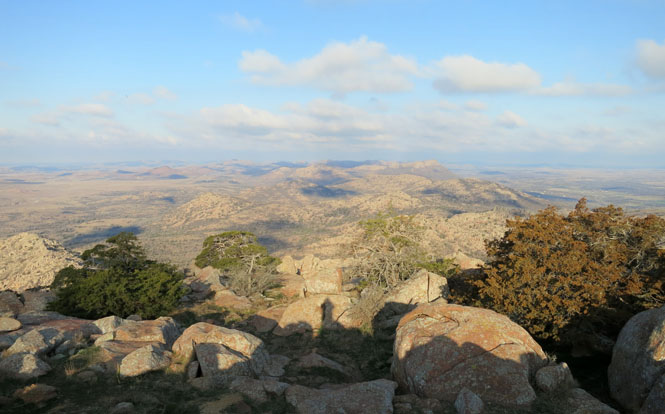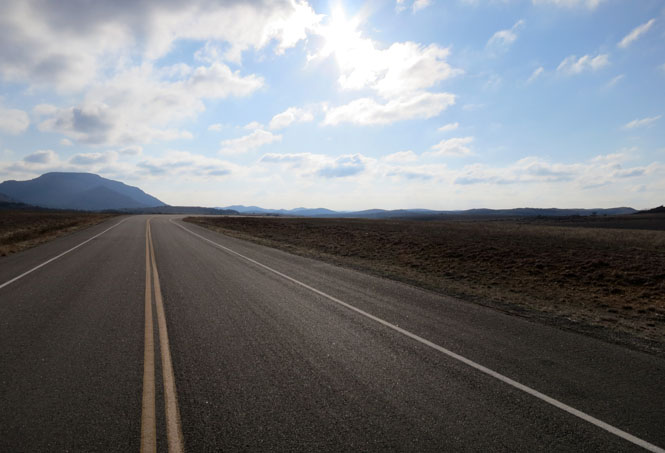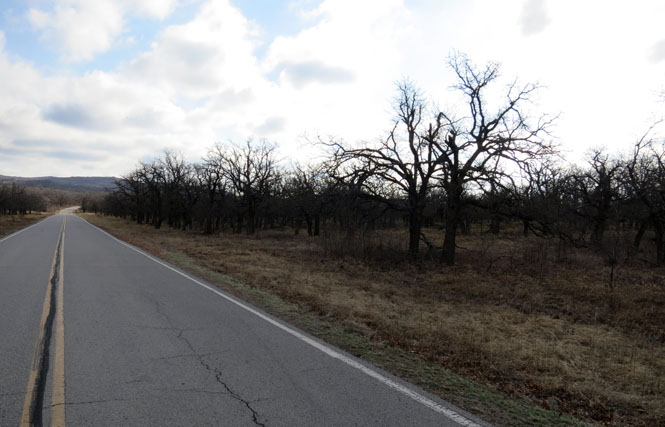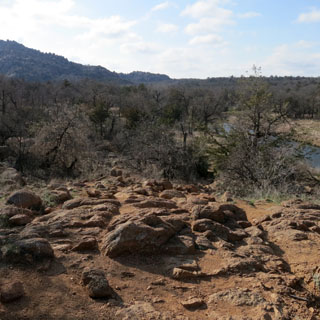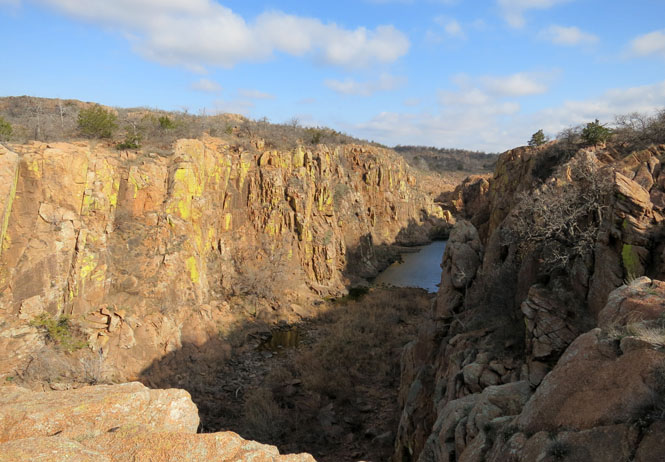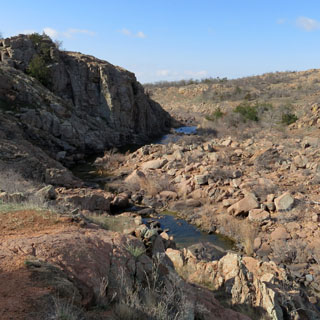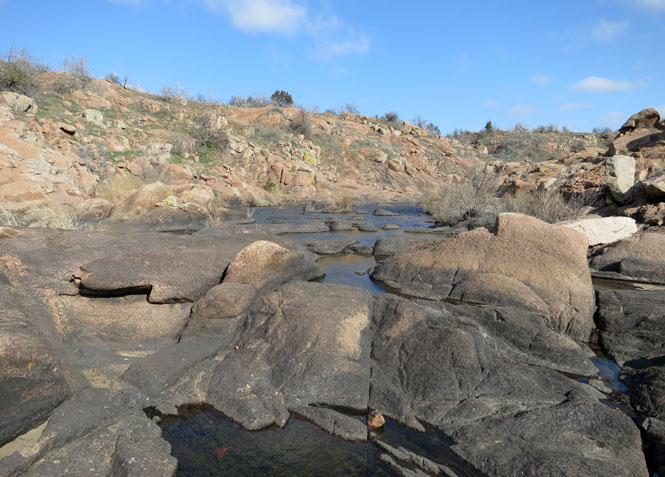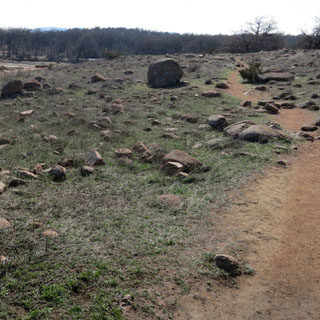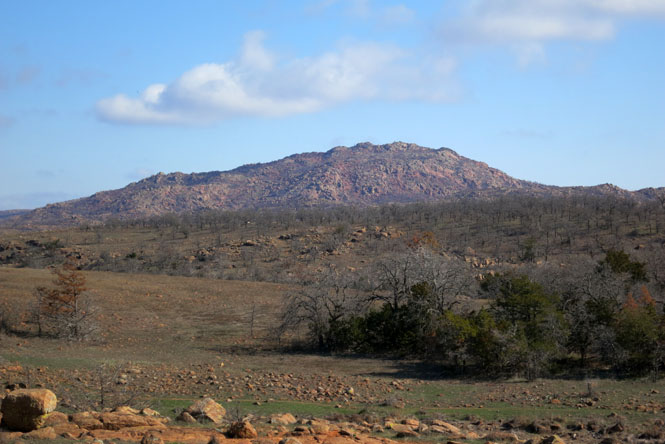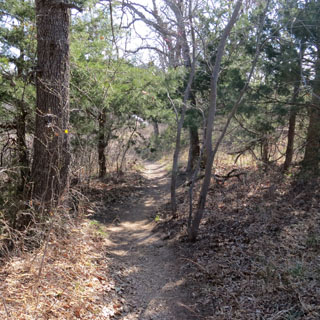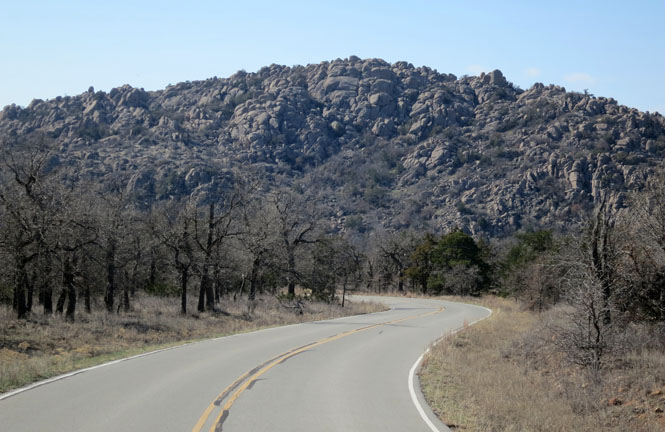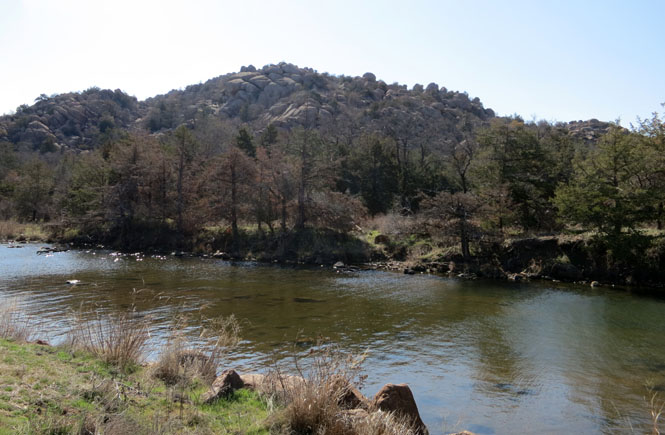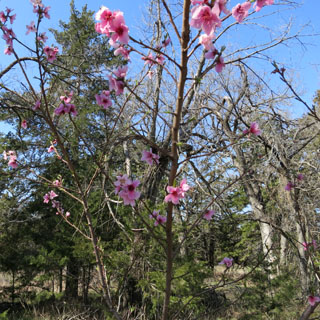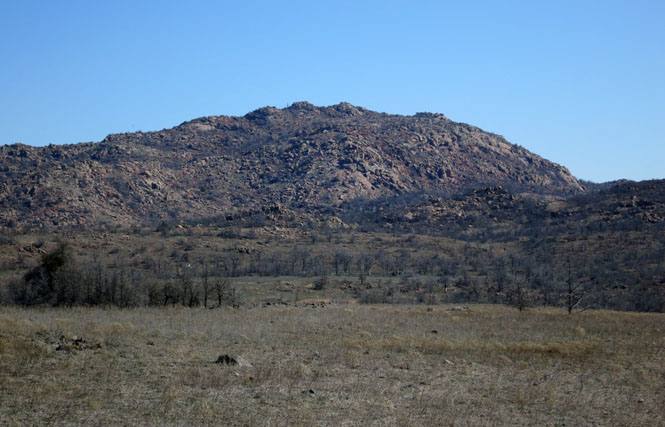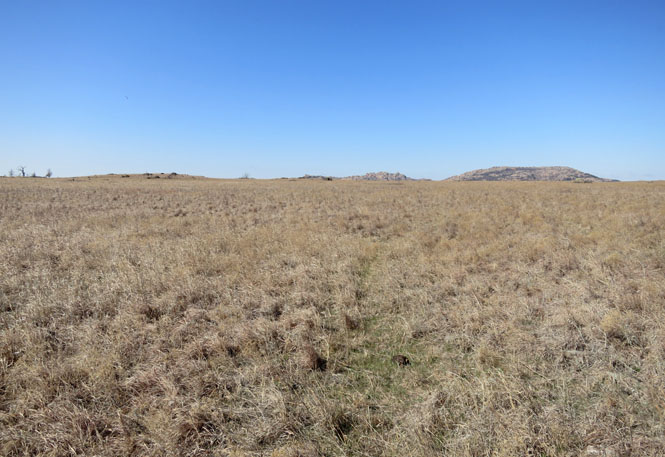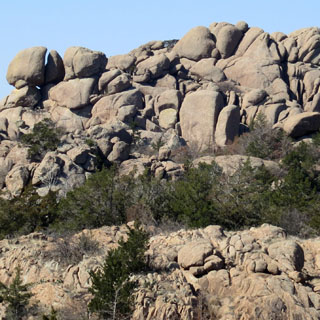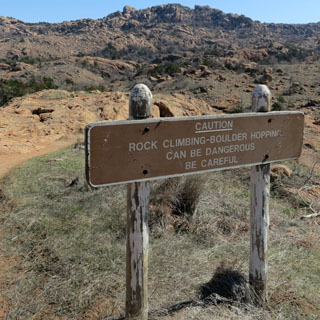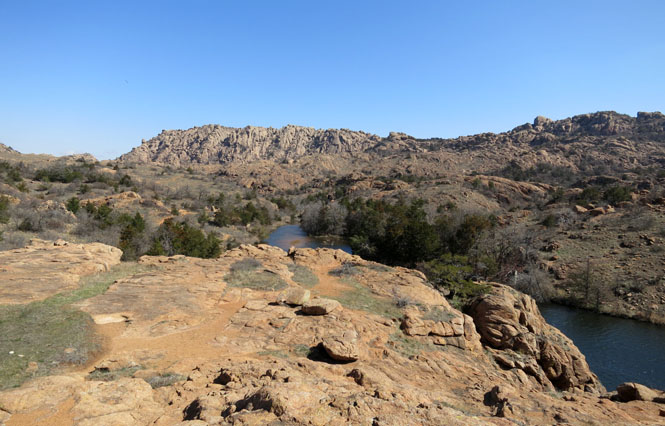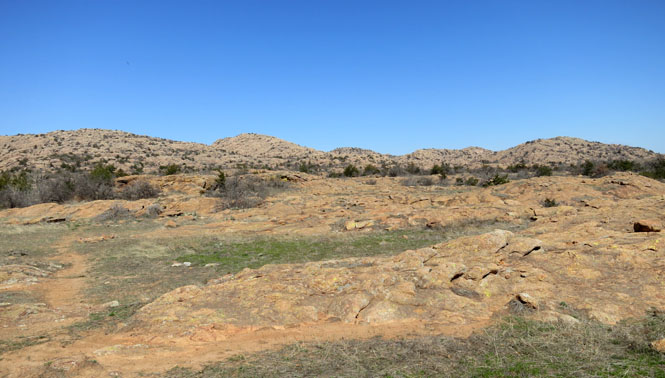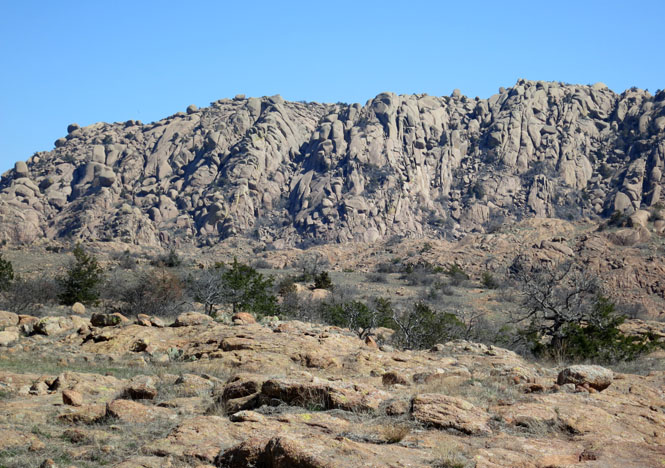March 24, 2013

 The
Wichita Mountains
Wildlife Refuge is in Oklahoma, not many miles west of Lawton.
The
Wichita Mountains
Wildlife Refuge is in Oklahoma, not many miles west of Lawton.
 Oklahoma
Oklahoma
The refuge was established back in 1901, so it's been protected from any real changes since then, and there wouldn't have been much done to the land before then since all the rocks kept it from being turned into farmland.
Established in 1901,Wichita Mountains Wildlife
Refuge is one of more than 556 refuges throughout the United States managed
by the U.S. Fish and Wildlife Service. The 59,020 acre refuge hosts a rare
piece of the past - a remnant mixed grass prairie, an island where the
natural grasslands escaped destruction because the rocks underfoot defeated
the plow.
The refuge provides habitat for large native grazing
animals such as American bison, Rocky Mountain elk, and white-tailed deer.
Texas longhorn cattle also share the refuge rangelands as a cultural and
historical legacy species. More than 50 mammal, 240 bird, 64 reptile and
amphibian, 36 fish, and 806 plant species thrive on this important refuge.
- US Fish & Wildlife website
The visitor center was not yet open, so I took the road to the top of Mount Scott.
It's cold (26 degrees) and very windy up here.
For being "only" a wildlife refuge, the visitor center is unexpectedly well done.
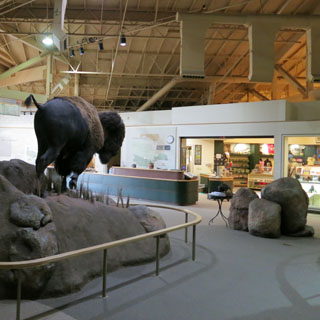
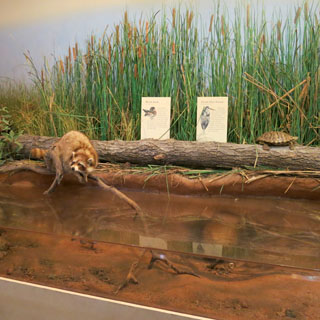
Hiking the Kite Trail. Sometimes it wasn't so easy to know which way the trail was going, but you can't really get too lost as long as you know where the river is.
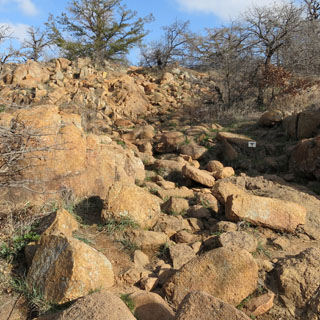
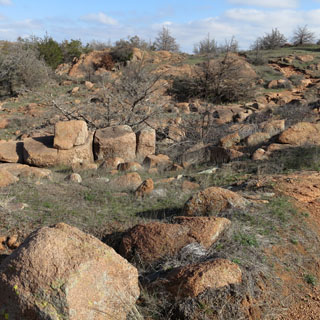
I walked the Kite Trail, but there are a number of other trails--some long enough that you could spend the day walking.
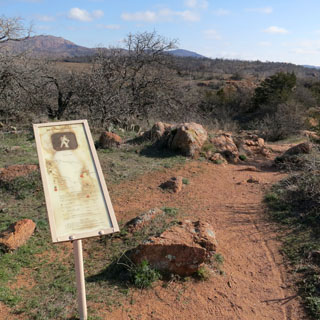
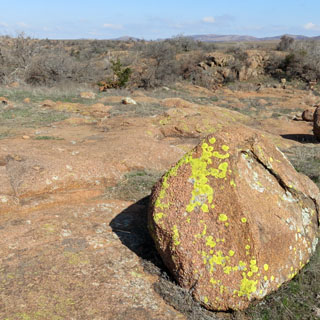
It is officially spring, so things are starting to bud.
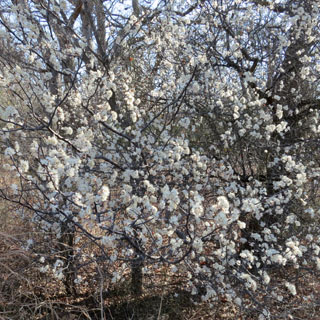
By 1900 there were only two small wild herds in all
of North America, numbering only 550 animals. This change was accelerated in
the last 40 years of the 19th century by the coming of the buffalo hunter
and thousands of land-hungry settlers. Farsighted conservation leaders such
as President Theodore Roosevelt became concerned. They realized that this
native American animal could easily become extinct.
In 1905, William
T. Hornaday and others organized the American Bison Society and demanded
that the buffalo be given care and protection. Through the efforts of the
American Bison Society and the New York Zoological Society, an offer was
made to donate 15 bison to the Wichita National
Forest and Game Preserve in Oklahoma. Congress set aside $15,000 for
this purpose, and on October 11, 1907, 15 of the finest buffalo from the New
York Zoological Park were shipped by rail to Oklahoma. Seven days later,
these six bulls and nine cows had safely returned to the plains and
mountains.
- US Fish & Wildlife website
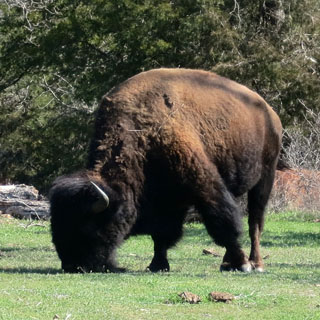
Three native herds dominate the Wichita Mountains
Wildlife Refuge, including American bison, Rocky Mountain elk and white-tailed
deer. While neither "native" nor "wildlife," a herd of Texas longhorn cattle is
maintained to preserve the cultural and historical legacy of this breed. These
four species are the basis for the vegetative management on the refuge, as they
are responsible for the vast majority of grazing and browsing. Each herd is
evaluated to determine the number of animals which can be maintained by the
refuge due to the limited availability of forage. As a result, minimum objective
levels for each herd are set, which is the fewest number of animals allowed in
each herd. These limits allow only approximately 33% of the grassland vegetation
available to be used each year, ensuring that all wildlife will have ample
forage available to them at any given time.
- US Fish & Wildlife website
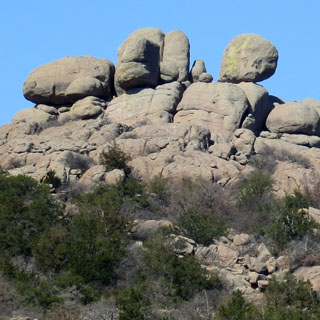
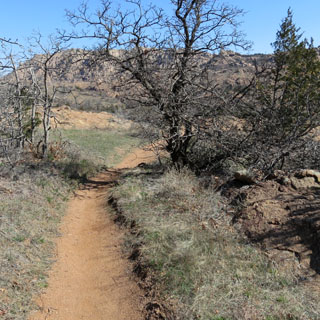
What a nice, unexpected place this is. I'd been through it on a motorcycle ride, but had never taken the time to stop and hike. It's really remarkable.


